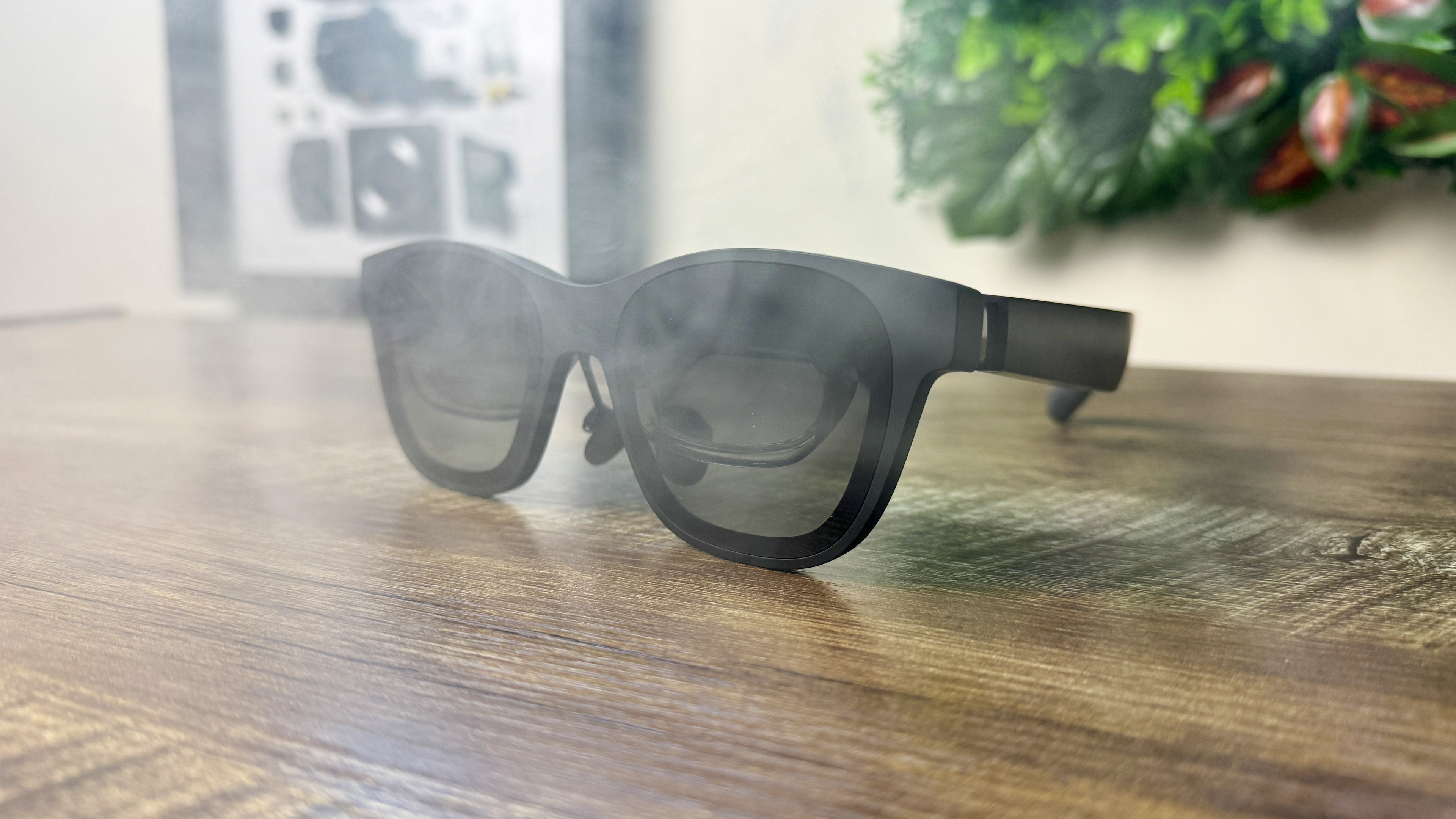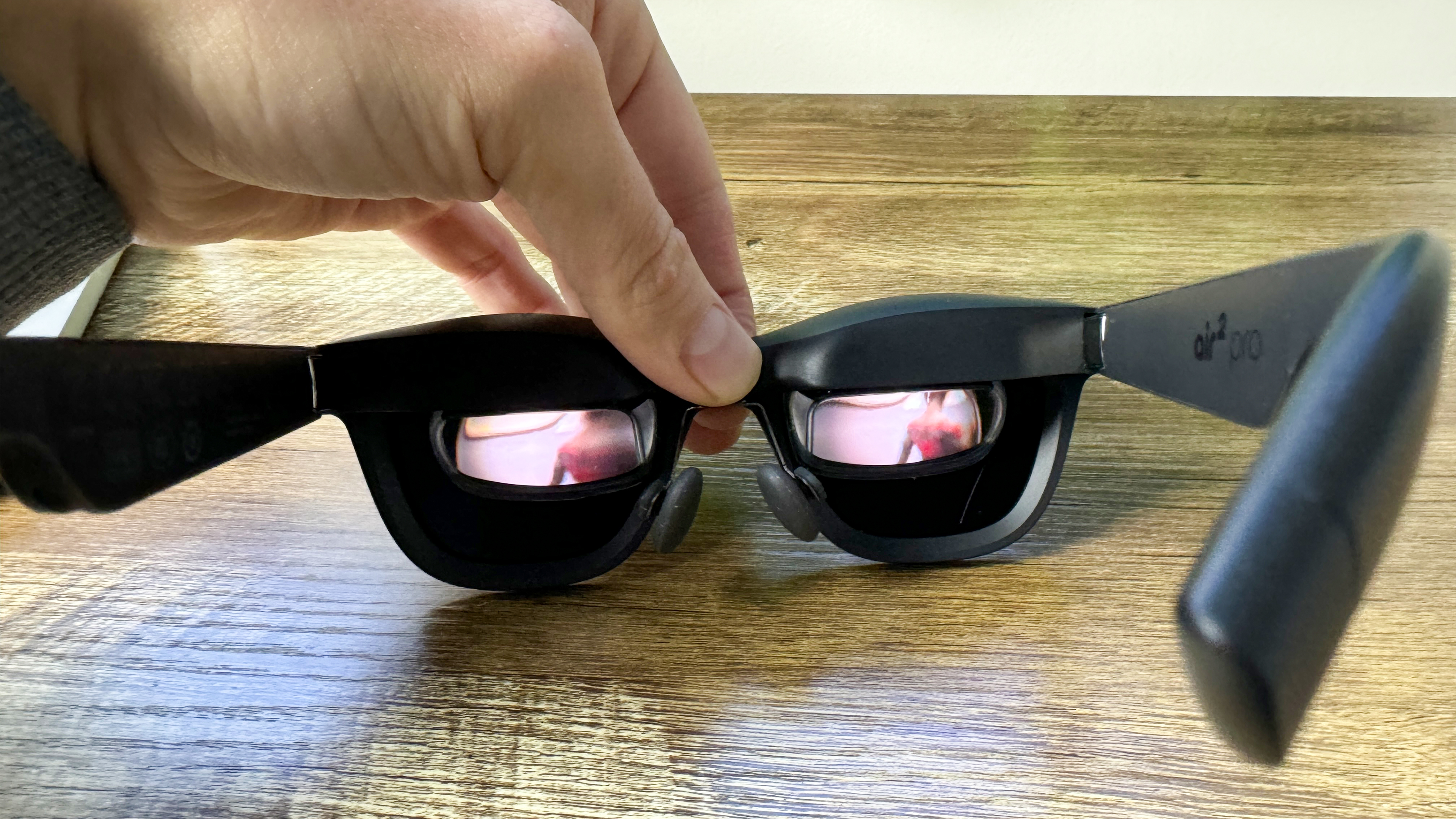
So here I am, working while flying over the Atlantic Ocean towards the U.S., and you best believe I’m using a pair of Xreal Air 2 spectacles. It got me thinking that outside of AI, which is definitely going to be the biggest buzzword of the entire show, the intersection of VR and AR is coming a close second.
What do I mean by that? Well, if you look at these two areas, they have been running on two parallel paths so far. One is dominated by glasses that pack prisms behind the lenses to essentially be a glorified external display for your Steam Deck or other device. Don’t get me wrong, the elimination of neck pain from having to crane over your display is worth the price of admission alone, but the feature set is a little slim at the moment.
Then you’ve got headsets like the Meta Quest 3 and Apple Vision Pro, which offer something a lot closer to that sci-fi future we all dreamed of in terms of a Ready Player One-esque virtual space that blends with the real world. Great to use, but let’s get real here — that vision of the future every company has that includes you wearing one of these gigantic headsets while you’re out and about makes you look like a bit of a prat.
Which begs the question: where do we go from here? There seems to be a very clear line between VR headsets and AR glasses, and what they are capable of.
The lines have been drawn

One thing is clear — these two parallel lines of technological progression are set to intersect. The future dream is all the XR technology of something like Apple Vision Pro in something the size of a pair of AR glasses. Our assumption has been that anything vaguely resembling this will be a few years down the line.
Even Xreal believes this is the case too, as co-founder Peng Jin (also known as PJ) talks about “wearable computing” being the next big step. Questions need to be asked about this future, such as whether users are still happy carrying multiple devices or whether they want just one. That would be the difference between wirelessly connecting to your phone to render the image, or relying on the cloud to render every VR scenario you look at — which would need significant server infrastructure and a ton of power to make work.
Regardless of whichever option is chosen, this is rather clear in the company’s product roadmap of bringing more and more virtual environment-based interactivity to the headset. That isn’t stopping the experimentation though, with PJ mentioning dabbling with bone conduction audio and even new display technologies that eliminate the prisms.
See the future? It’s sooner than you think

The minimization of the technology is surely going to take a while before you’re able to have what is akin to a new type of computing located entirely within a pair of glasses… Right?
Well, I think we’re all wrong, as all signs point towards some big developments coming to XR, which leads conveniently onto my prediction for the big show kicking off in just a couple days.
I bet we’ll see three key things to start the journey to the ultimate XR glasses:
- Display technology that entirely removes the glass prisms in front of your eyes: Xreal already confirmed it’s working on a concept of this, which projects the image across the lens from the side rather than from the top down through the glass. Time will tell whether it’s them who do drop it, but I wouldn’t be surprised to see a prototype of this arrive. Plus, this is the main obstacle to AR glasses actually being the size of glasses.
- Device-free computing: Ambitious, but could be possible. Whether the battery tech will keep up is probably unlikely, but maybe doing something like adding Airplay directly into the glasses themselves rather than requiring an entire separate add-on like the Xreal Beam.
- Hand-tracking within the glasses: This is probably the biggest prediction of the bunch — given it’s going to take a lot of computation squished into the glasses, alongside packing a couple cameras into the bottom of the rims without looking too suspiciously large.
Here’s the interesting part, though. I don’t believe we’ll see these combined into one pair of glasses just yet. The AR space is quickly becoming a competitive one (which Xreal is currently leading with 51% of the market share), and each company is betting on a different horse.
Xreal’s Air 2 is going hard on gaming simplicity and spatial computing, Viture has its sights set on a fully fleshed-out sensory experience with all the accessories, and TCL’s Rayneo glasses are gunning for the best possible picture in as minimal of a form factor as possible.
All of this makes for an interesting divergence that will only end when one winner decides to combine it altogether, while learning a few lessons from VR headsets and bringing the two categories together.
Personally, I believe that journey starts at this year’s CES 2024. You’re going to hear a lot of people talking about AI over the next few days, but don’t ignore the silent revolution that’s only just beginning — potentially allowing everyone to feel like Tony Stark in just a few years.
Check out our CES 2024 hub for all the latest news from the show as it happens. Follow the Tom’s Guide team in Las Vegas as we cover everything AI, as well as looking at the best new TVs, laptops, fitness, wearables, and smart home gadgets at the show.
And be sure to check out the Tom's Guide TikTok channel for all the newest videos from CES.







